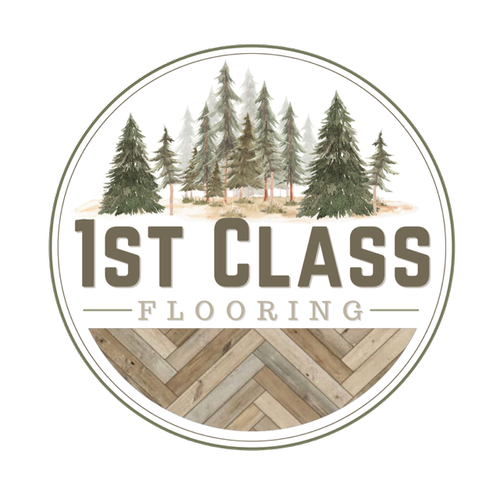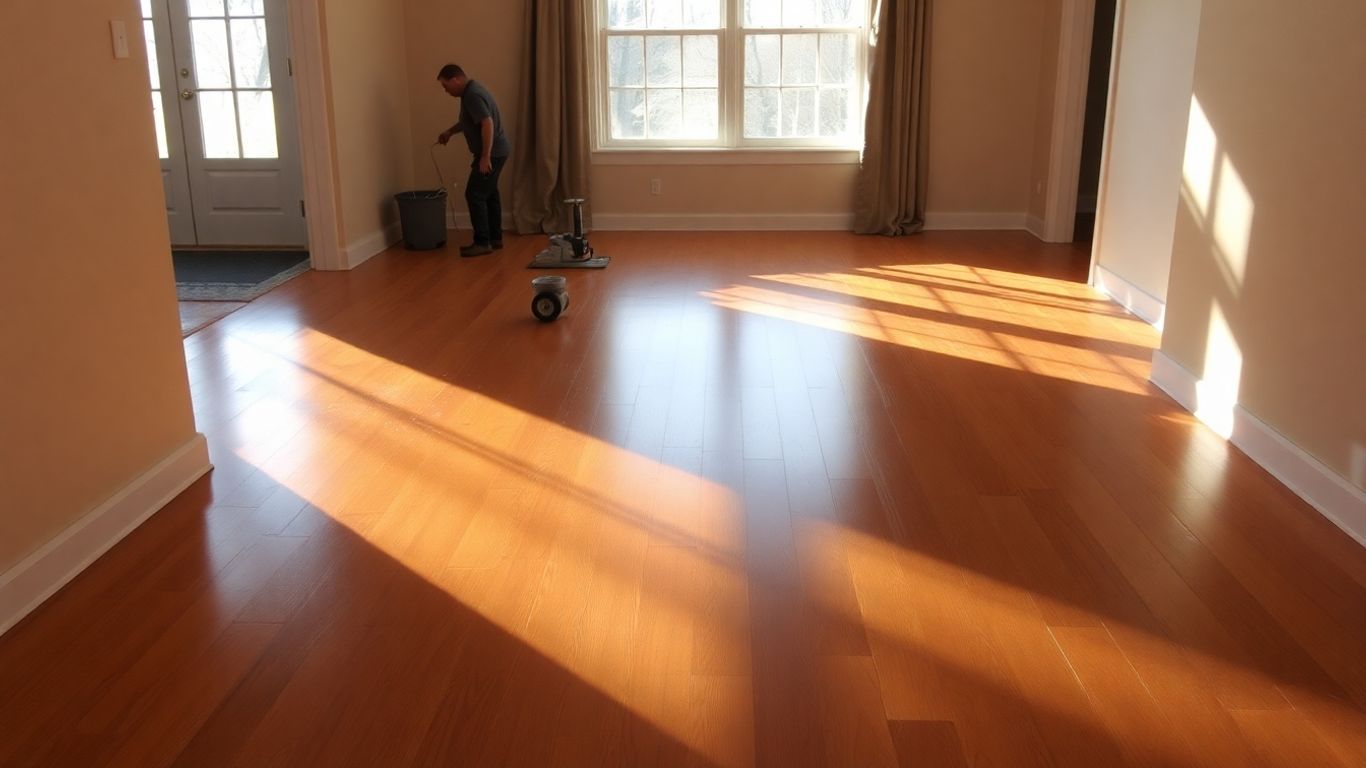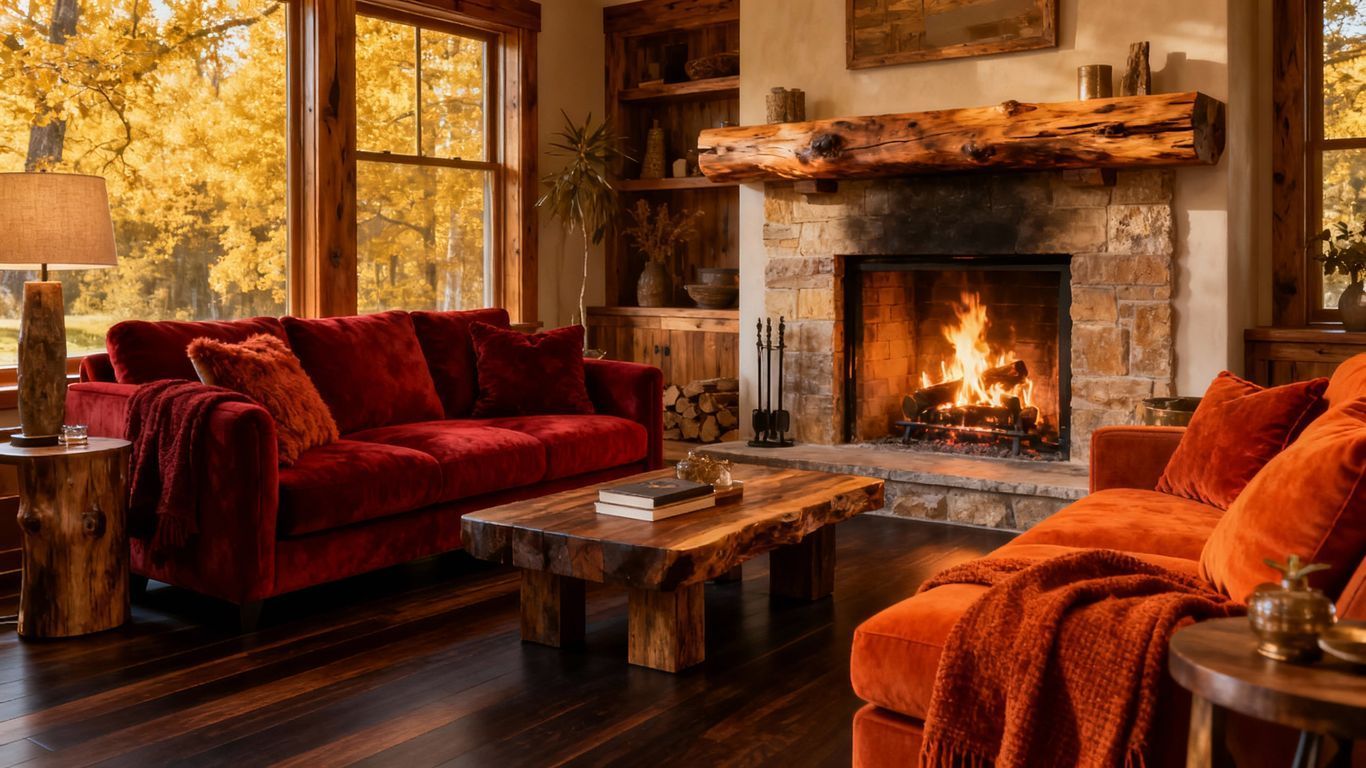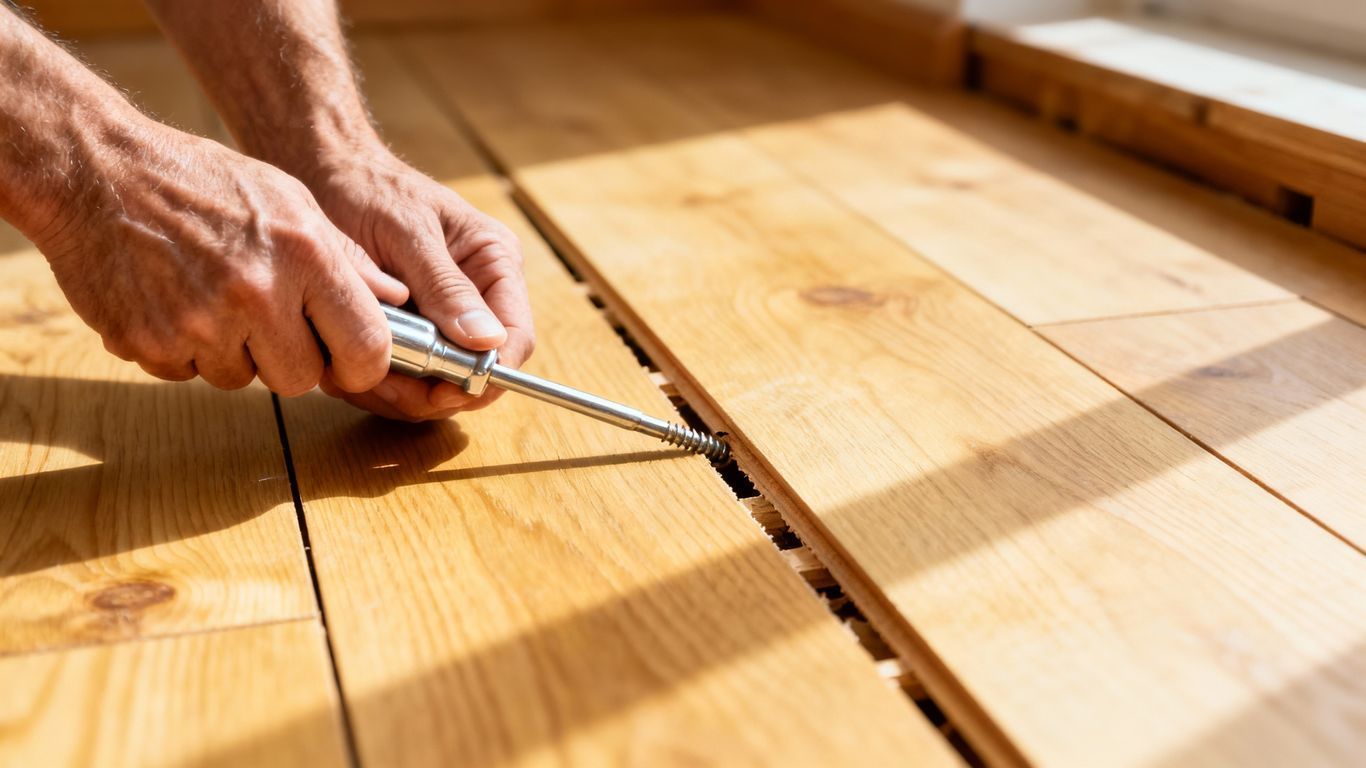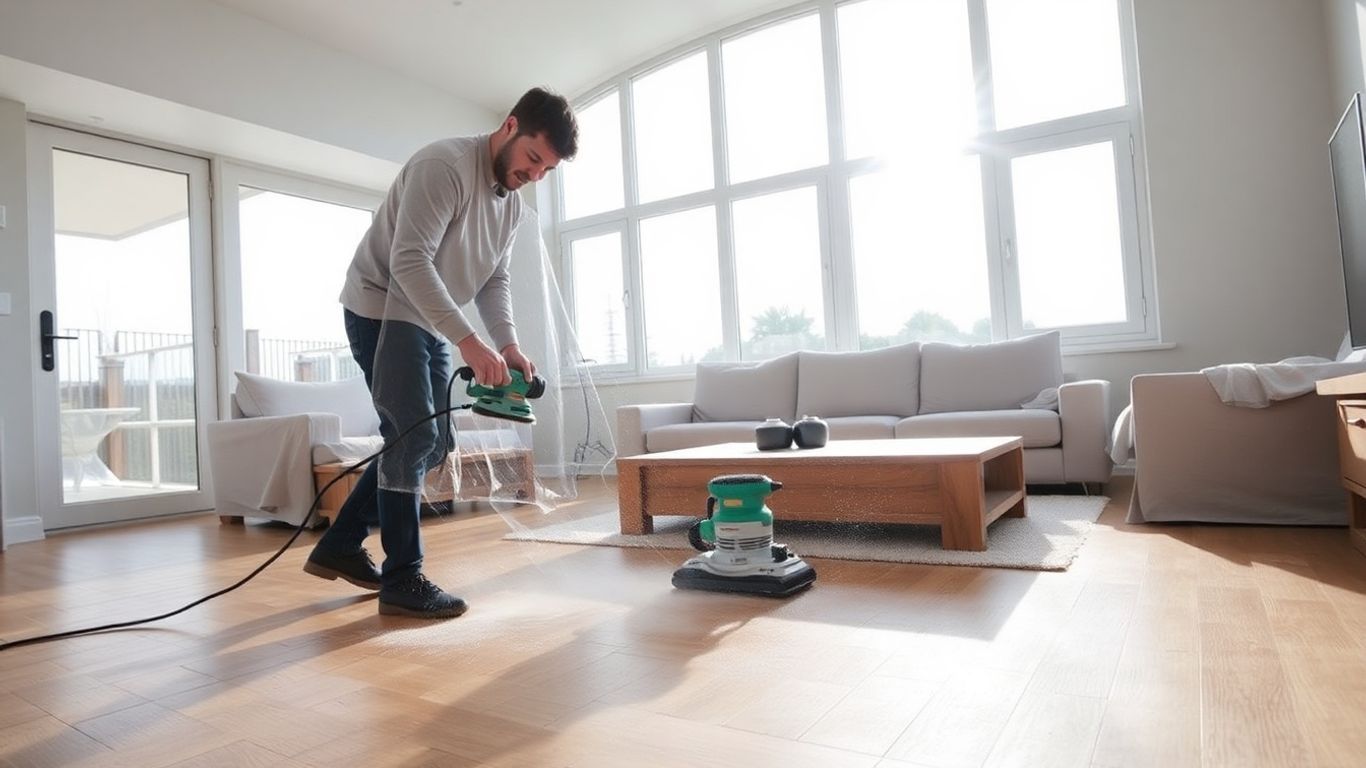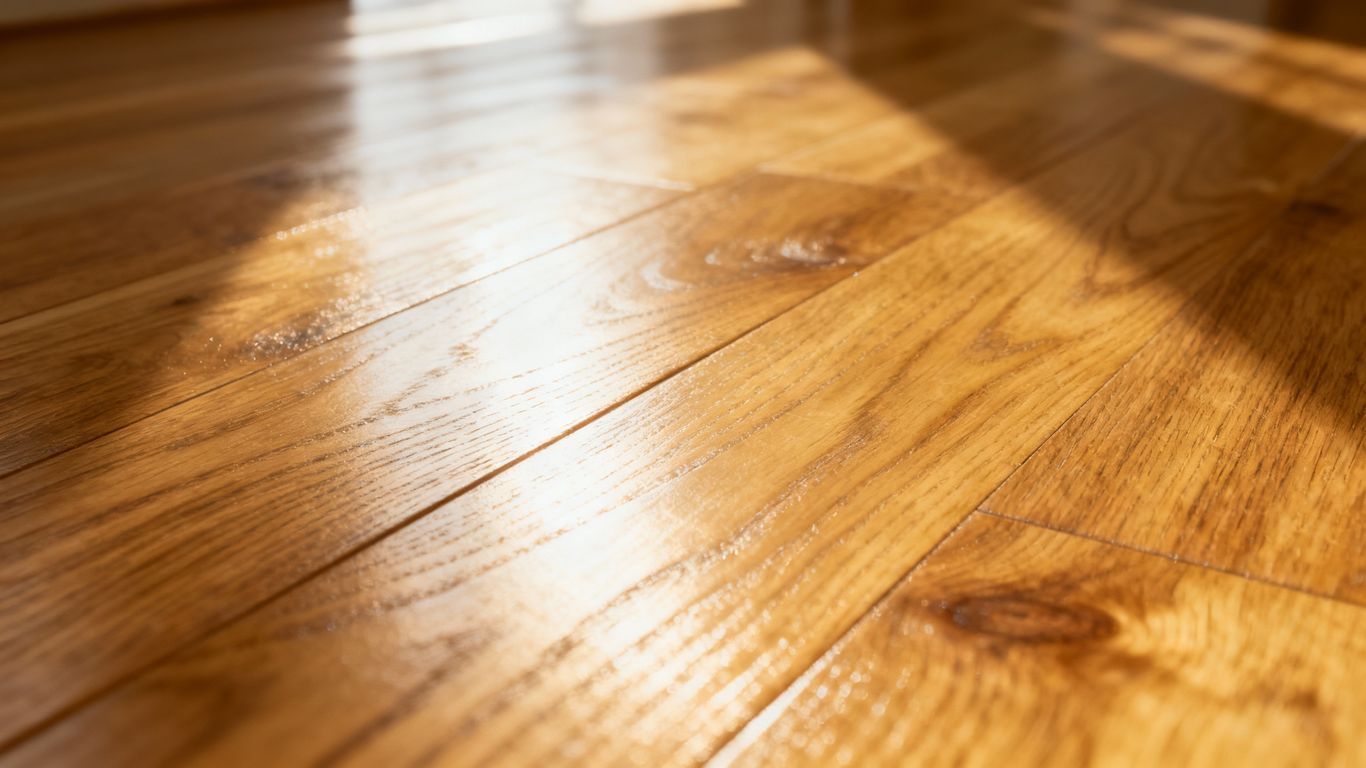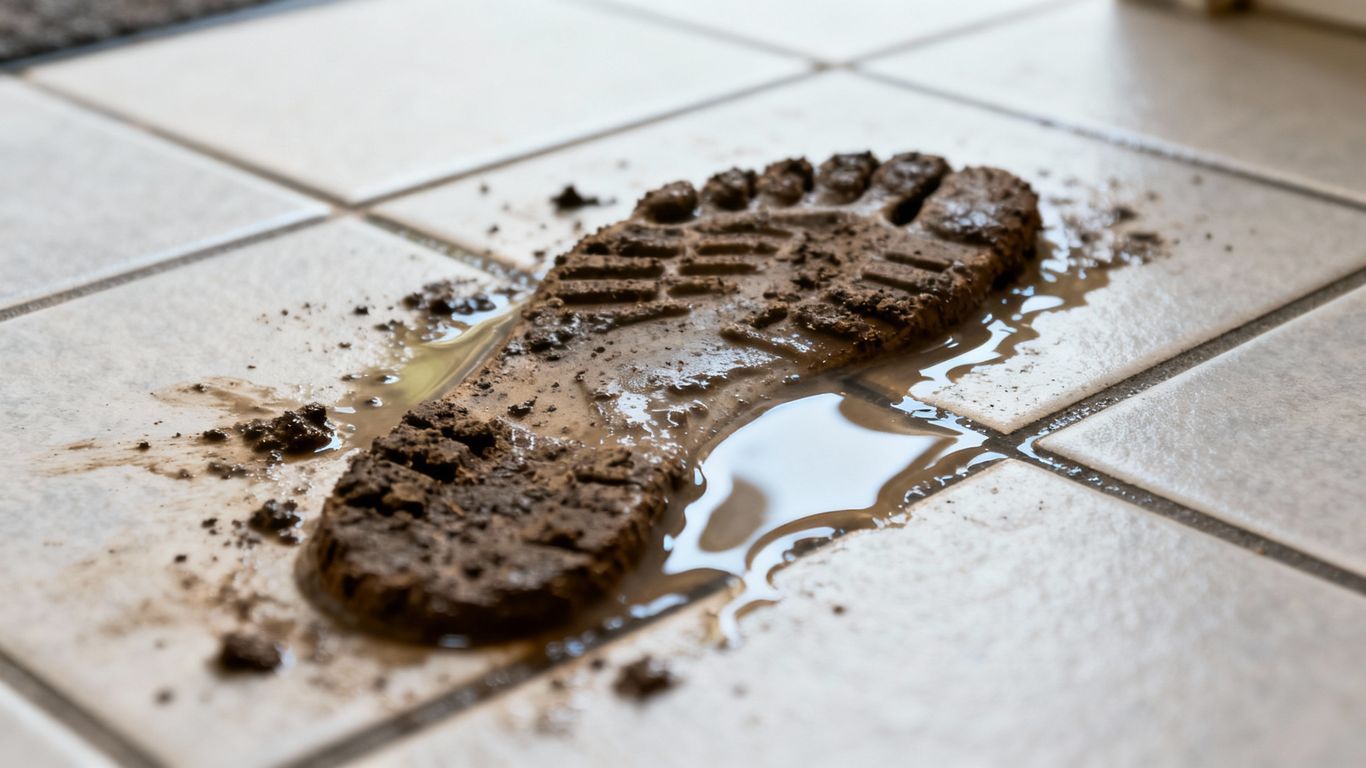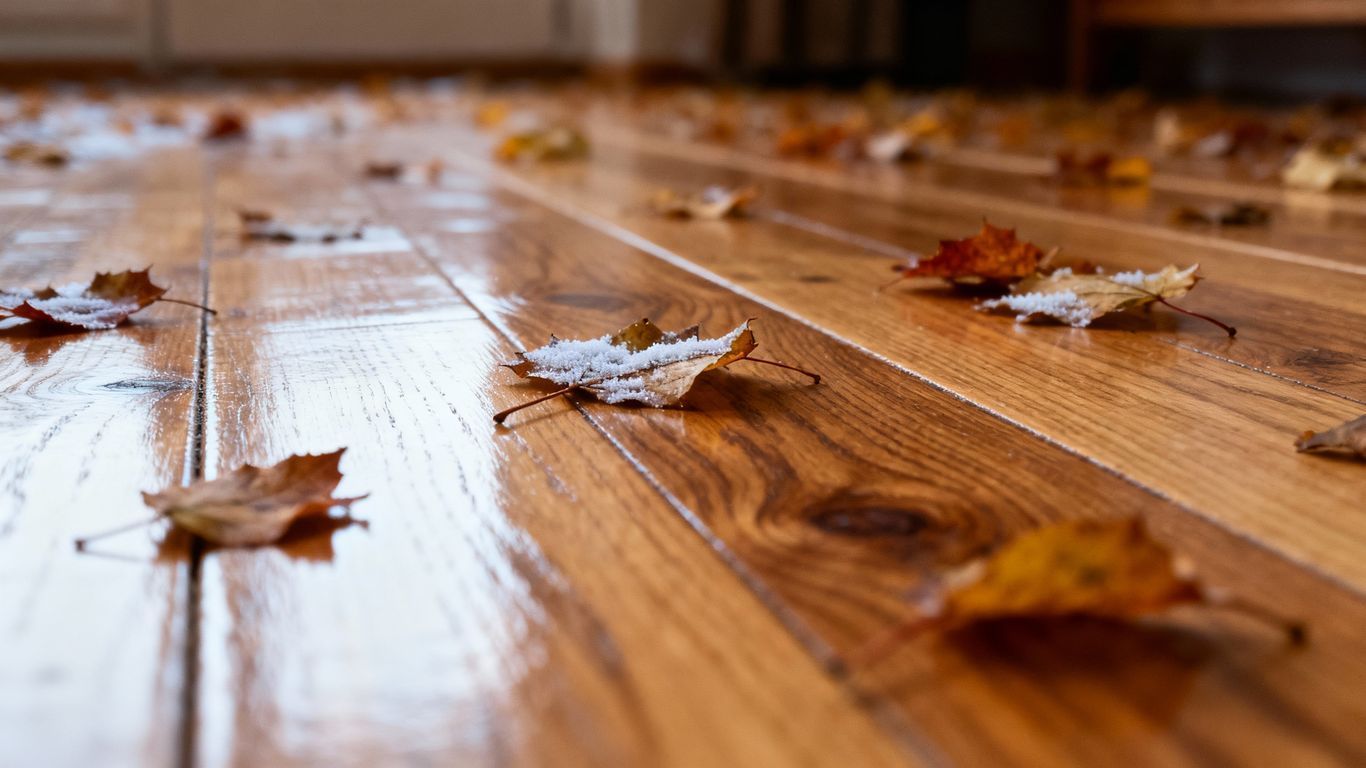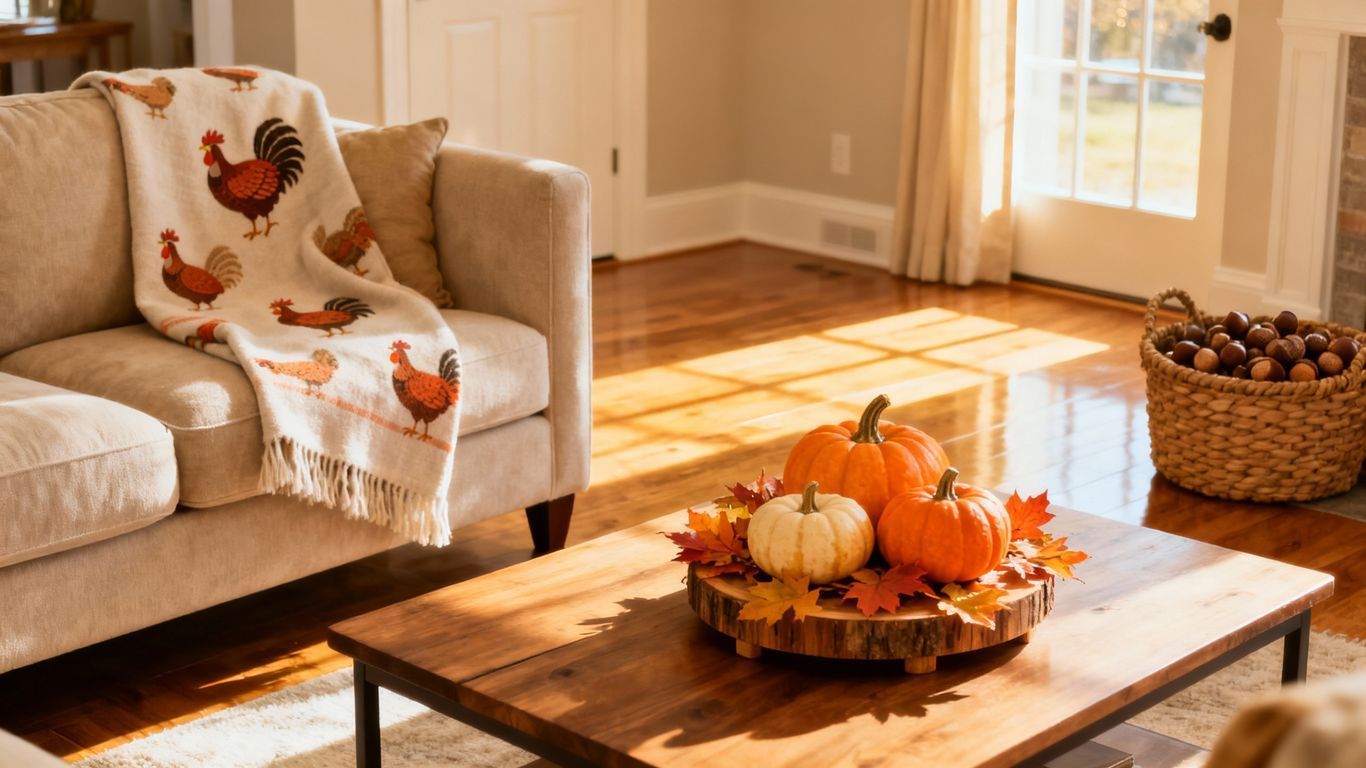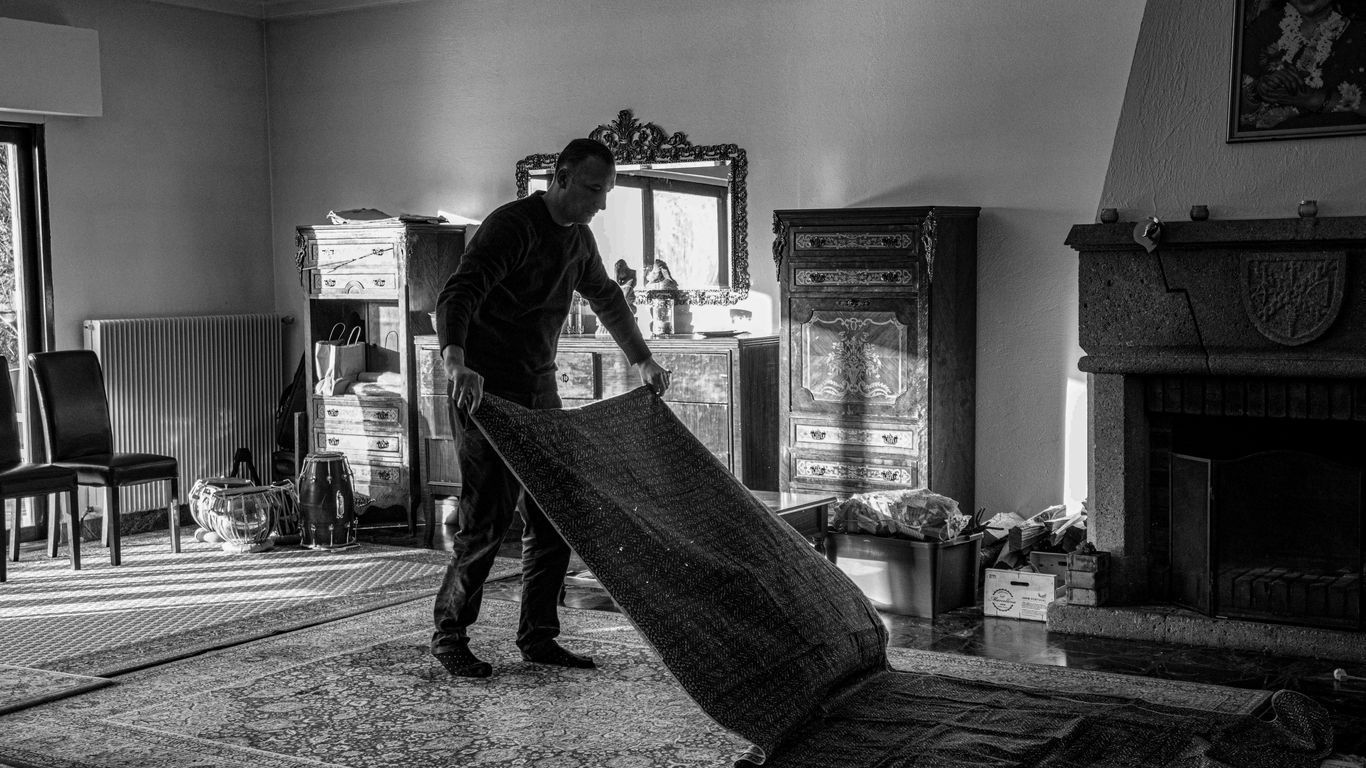Repairing Pet Scratches on Hardwood Floors in Fort Oglethorpe & Chattanooga
Living with pets in Fort Oglethorpe or Chattanooga means your hardwood floors probably see a lot of action. Scratches from claws and the occasional accident are pretty common. If you’re looking at your floor and thinking it’s seen better days, you’re not alone. Fixing pet scratches isn’t impossible, and you don’t always need to call in the pros. With the right approach, you can make those floors look good again and keep them that way.
Key Takeaways
- Figure out if your floor needs a simple touch-up or a bigger fix before starting any repairs.
- Use wood filler and cleaning products that are safe for hardwood floors when doing repairs yourself.
- Surface scratches can often be buffed out, but deeper ones might need filling and sanding.
- Sometimes hiring a local hardwood floor repair Fort Oglethorpe specialist is the best choice for tough damage.
- Keeping pets’ nails trimmed and using rugs can help stop scratches before they start.
Identifying Pet Damage On Hardwood Floors
Signs Your Floor Needs Repair
Spotting problems from pets on your wood floors isn't always as easy as you expect. Sometimes, a scratch won't be clear until the light hits it just right. Watch for these tell-tale signs:
- Gray, dull streaks or lines that weren’t there before
- Sections where the finish seems worn or cloudy
- Tiny grooves or pits, especially near doors, water bowls, or places your pet likes to play
It's smart to regularly check for subtle changes—the quicker you notice damage, the easier it is to fix without big repairs later.
Common Types of Pet-Related Scratches
Not all scratches are the same. Pets can leave marks in a bunch of different ways, especially if their claws are long or sharp. Here’s what to look out for:
- Surface scratches from running or sliding (these usually don't go deep)
- Light etching from claws when pets turn sharply
- Deeper gouges when heavy pets jump or skid
- Wear near entryways where pets come in with dirty feet
It helps to pay attention to what activities might be causing the marks—sometimes it’s the chase for a toy or a sudden jump off the couch.
Assessing Deep Versus Surface Scratches
Knowing if you’ve got a serious scratch or something minor makes all the difference. Surface scratches usually affect just the finish, not the wood itself, and can often be treated with gentle methods. Deep scratches might cut straight into the wood, creating grooves you can feel with your finger.
Here’s a quick way to figure out what you’re dealing with:
- Run your fingernail lightly across the scratch.
- If you feel a dip, it's likely a deeper mark.
- If your nail slides without snagging, the scratch is probably just in the finish.
For minor scratches, gently blot them clean with a pH-balanced wood floor cleaner, as suggested in tips for using proper cleaning products on wood floors. Deeper grooves may need specialized repair.
If in doubt, always start small—you can make it worse if you attack a tiny scratch with the wrong tool or cleaner.
Essential Tools And Materials For Scratch Repair
When it comes to fixing pet scratches on your hardwood floors, starting with the right gear makes a big difference. Whether you’re working on a small surface mark or a deep groove, having reliable supplies on hand helps things go far smoother—it’s not just about getting that shiny look back, it’s also about keeping the floor in good shape for longer.
Selecting The Right Wood Filler and Putty
Picking a filler or putty that matches your floor’s finish isn’t just for looks; it keeps the patch from standing out like a sore thumb. Here’s what you’ll want to consider:
- Choose natural or pre-tinted wood fillers for easier color matching
- Use flexible wood putty for cracks and deeper dents
- For stubborn or wide scratches, opt for a hard-drying putty that can be sanded smooth
Matching is key—if you’re unsure, test a tiny hidden spot before starting.
If you need extra ideas, different scratch repair materials are often compared for their pros and cons on many home care blogs.
Cleaning Solutions Safe For Hardwood
Before touching up any scratches, clean the spot gentle but thorough:
- Use pH-balanced wood cleaners (avoid harsh chemicals)
- Microfiber cloths pick up dust without scratching further
- A damp (not wet) mop helps lift stubborn grime
Don’t let the floor get too wet—standing water is hardwood’s enemy and will make things worse.
Sanding Tools And Applicators
To prep and finish the repair, you’ll need basic but important tools:
- Fine-grit sandpaper (220 grit or up) for gentle smoothing
- Small tack cloths for picking up dust after sanding
- Foam or bristle brushes for even application of finish
Proper tools make all the difference. Even if you’re not aiming for perfection, a little extra effort here sets you up for a way nicer end result.
Step-By-Step Guide To Surface Scratch Removal
Handling scratches on your hardwood floors is something you can try before calling for help. Even with pets running around, most surface marks can be managed with a careful, methodical approach. Scratches don’t have to ruin the look of your floor when you give a little attention to these steps. Here’s a breakdown of what works best:
Cleaning And Prepping The Affected Area
Start by thoroughly cleaning the area. A soft-bristle broom gets up dust and fur, then a hardwood-safe cleaner lifts off the rest. This is important—if grit is left behind, you might just make things worse. Once dry, inspect the scratch to see how deep it really is. Sometimes, what looks harsh at first is actually quite shallow.
- Sweep up loose debris or pet hair
- Use a damp microfiber cloth with a cleaner made for hardwood
- Dry completely before moving on
Giving the floor a good clean can help you spot scratches that might not need any special treatment at all.
Buffing Out Minor Scratches
For light scratches, a DIY mix can work wonders. Gently buffing with a soft rag or applying a homemade mix of apple cider vinegar and olive oil can help blend in these marks. Let it sit on the scratch for several minutes, then wipe it away with a clean cloth—try this simple method before turning to harsher fixes. Don’t scrub too hard; hardwood doesn’t like that.
- Rub gently in the direction of the wood grain
- Don’t go overboard—it’s easy to do more harm than good
- Repeat if necessary, but keep checking after each attempt
Applying Finish To Restored Sections
After you’ve buffed away (or minimized) the scratch, it’s a good idea to add a thin layer of wood finish. This seals up the area, protects from water, and helps the repaired spot blend into the rest of the floor. For best results, use a small artist’s brush for control and let it dry fully before walking on it.
- Choose a finish that matches your current floor
- Apply an even layer, feathering out the edges
- Allow proper drying time, usually a few hours
Caring for your hardwood this way just might keep things looking nice until your next big cleaning or maintenance streak.
Advanced Methods For Deep Scratch Repair
Deeper scratches from pets can be pretty annoying, especially when they dig into the wood and stick out. Tackling these scrapes takes more than just quick buffing—there’s some serious work involved if you want it to blend in and last.
Filling And Sanding Deeper Grooves
When the scratch catches your fingernail or you can see the raw wood, it’s time to patch things up. Here’s what most people do:
- Clean out dust and any loose stuff in and around the scratch.
- Use a wood filler that matches your flooring’s color as close as possible.
- With a putty knife, press the filler firmly into the groove and smooth it level with the rest of the floor.
- Once it dries, gently sand the area to blend it into the neighboring boards. (A light abrasion process, like described in removing minor imperfections, can help keep everything even.)
Filling those scratches might seem tedious, but doing it right can make them almost disappear, so it’s worth taking your time.
Matching Stain And Finish With Existing Floor
Getting the color right is what makes the fix look invisible. After sanding, the raw patch will stand out unless it matches the surrounding floor. Use a test spot in an out-of-sight area to check your color. Then:
- Apply a tiny bit of floor stain with a clean rag or brush. Wipe off any excess.
- Wait for it to dry completely.
- Compare to the original floor under good lighting—sometimes stains dry darker or lighter than you expect.
- Add a second coat if the color still doesn’t match.
Sealing And Protecting The Repaired Area
Once the color’s right, seal the spot to protect the repair and keep it from drying out or getting dirty. This usually means applying floor finish:
- Choose between water-based or oil-based finishes to match the rest of your floor’s sheen.
- Use a small brush, feathering the edges so it blends in.
- Let it dry, then do a gentle buff if it feels rough to the touch.
- Stay off the area for as long as the manufacturer recommends before walking or placing furniture on it.
Deep scratch repair isn’t quick, but it’s definitely doable if you tackle it step by step. Just make sure your materials match, and don’t rush the drying times. That way, your floor keeps looking good and can handle whatever life (or your pets) throw at it.
Choosing Professional Hardwood Floor Repair Services In Fort Oglethorpe
If your hardwood floors in Fort Oglethorpe look scratched up from pet nails and you’re not wild about messing them up more, professional help might actually be the stress-free route. Here’s how to make sure you pick the right company and get your scratched-up planks looking good as new (or close to it).
What To Look For In A Local Specialist
Not all floor repair techs are equal, and a little research goes a long way. When checking out providers in Fort Oglethorpe or nearby Chattanooga, pay attention to these things:
- Experience with pet damage: Ask if the company has fixed pet scratches before—it’s more common than you might think.
- Solid local reviews: Look up ratings on Google or social media, and maybe ask your neighbors.
- Licensed and insured: Never a bad idea to check if they’re covered, just in case anything goes sideways during your repair.
Benefits Of Hiring Experienced Technicians
Ever tried DIY fixes and ended up with results that made things worse? There’s a reason people go pro for this stuff:
- Technicians know how to match stains and finishes better than most store-bought kits.
- They can spot hidden issues, like weak spots or deeper gouges.
- Their repairs last longer, saving you headaches in the long run.
With the right professional, there’s less mess, less stress, and a much better chance your floor ends up looking like nothing ever happened.
Questions To Ask Before Scheduling A Repair
There’s no such thing as a silly question when it comes to your floors. Here’s what you’ll want to ask any repair company before you book:
- What’s included in the estimate? (Are both materials and labor covered?)
- How will you match my floor’s color and finish?
- How long will the repairs take, and will I need to stay off the floors?
- Do you guarantee the repair work?
Remember, a quick phone call or email can save you from surprises down the line. Take a couple extra minutes, and you’ll thank yourself later.
Preventing Future Pet Scratches On Hardwood Floors
Protecting your hardwood floor from pet scratches takes a mix of planning and regular habits. A little prevention goes a long way, making your floors look newer and saving you from constant repairs. Here’s how you can keep those floors safe from your furry friends:
Using Area Rugs And Runners Strategically
Covering up the most-used pathways and spots where your pets hang out does a lot to stop scratches before they start.
- Place washable runners in hallways and entryways where your pets pass by most.
- Layer area rugs near food and water bowls or around beds where claws often dig in.
- Use rug pads that won’t stick or damage your hardwood for added grip.
Protecting high-traffic spots doesn't just help your wood look better—the rugs can quiet down noise and keep paws comfortable, too.
Regular Grooming Of Your Pets
Let’s be real—long nails are a big reason for those marks on your floor. Regular maintenance goes a long way.
- Clip your pet’s nails frequently, or book a local groomer if you’re not comfortable doing it yourself.
- Check their paws for any dirt or tiny pebbles after outdoor play, since these can scratch floors almost as much as nails.
- Try to train your dog or cat not to zoom around on the slickest parts of your hardwood.
Choosing Pet-Friendly Floor Finishes
Some finishes make your floor tougher and hide light scratches better, which helps if you have pets.
- Consider a matte or satin finish—these don't show marks as much as shiny ones do.
- Look for durable polyurethane or water-based finishes recommended for homes with pets, since they’re harder to scratch.
- Get advice about refinishing from a local expert like hardwood floor repair services in Chattanooga if you need help choosing the best protection.
Having pets and hardwood doesn’t mean you have to live with a scratched-up floor. With the right habits, simple upgrades, and a few smart purchases, your home can stay beautiful and safe for everyone.
Maintaining Restored Hardwood Floors For Longevity
Bringing new life to scratched-up hardwood is great, but keeping those floors in good shape afterward matters just as much. A few simple habits at home can make that restored look last far longer and help you avoid repeat repairs down the road.
Routine Cleaning And Care Tips
- Sweep or dust mop several times a week to keep grit from acting like sandpaper on your finish.
- Use a damp mop (never soaking wet) with a hardwood-friendly cleaner. Too much water is tough on wood.
- Wipe up spills right away. Moisture can seep into the seams and undo all your hard work.
Keeping dirt and dust off your floors is the single best way to protect that fresh, smooth look. Spend a few minutes most days on this, and it becomes second nature.
Periodic Recoating Recommendations
- Every couple of years, plan to add a maintenance coat of finish. This simple step fills in microscratches and refreshes the seal.
- Pick a finish that matches your original repair—oil-based or water-based finishes don’t always blend.
- Sand lightly before recoating to help the new finish stick better.
Addressing New Damage Promptly
- For small scratches, use a wood touch-up marker or wax stick right away before they grow.
- If pets make a habit of scratching the same spot, consider a rug or mat to break the cycle.
- Don’t leave deeper gouges untreated—they can spread if moisture gets in. Tackle repairs sooner rather than later.
Taking a little time each week to clean and keep up with little problems can save a lot of stress (and money) later. Restored hardwood floors don’t have to be a headache—staying ahead of damage lets you enjoy them for years.
To keep your newly restored hardwood floors looking great for years, be sure to clean them often and quickly wipe up any spills. Placing mats near entryways and using furniture pads can also help protect your floors from scratches or damage. If you want more easy tips or need expert help, check out our website for more information!
Wrapping Up: Fixing Pet Scratches on Hardwood Floors
So, there you have it. Fixing pet scratches on your hardwood floors in Fort Oglethorpe or Chattanooga isn’t as scary as it sounds. Sometimes, all you need is a little elbow grease and the right supplies. Other times, you might want to call in a pro, especially if the scratches are deep or you’re just not up for the task. Either way, your floors can look good again, and your pets can keep running around without you stressing too much. Just remember, a few marks here and there are part of life with animals. At the end of the day, it’s all about making your home feel comfortable and lived-in.
Frequently Asked Questions
How can I tell if my hardwood floor needs repair because of my pet?
Look for scratches, dents, or spots where the wood looks dull or rough. If your floor has places that catch your sock or feel uneven, it might be time for a repair.
Are all pet scratches on hardwood floors the same?
No, some scratches are just on the surface and are easy to fix, while deeper scratches may go into the wood and need more work. Small, light scratches often just need a quick touch-up.
What tools do I need to fix pet scratches on my hardwood floor?
You’ll need a wood filler or putty, a gentle cleaner safe for wood, sandpaper or a sanding pad, and a finish that matches your floor. These help you clean, fill, smooth, and protect the area.
Can I repair deep scratches by myself, or should I call a professional?
You can fix small scratches on your own, but for deep grooves or large damaged spots, it’s better to call a professional. They have the right tools and know how to make the repair look good.
How can I stop my pet from scratching the floor again?
Try putting rugs or mats in places where your pet walks a lot. Keep your pet’s nails trimmed and think about using a finish on your floor that can handle more scratches.
How often should I clean and check my hardwood floors for damage?
Sweep or vacuum your floors every week, and look closely for new scratches or dull spots every month. Quick cleaning and fixing small problems early will help your floors last longer.
